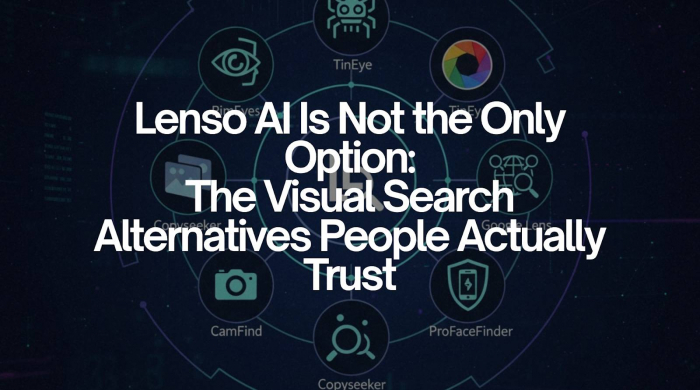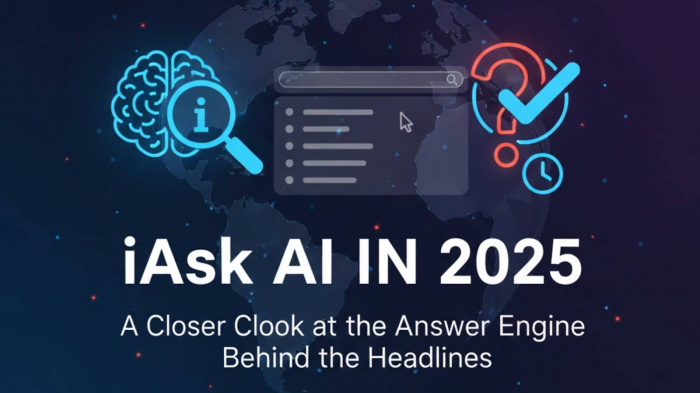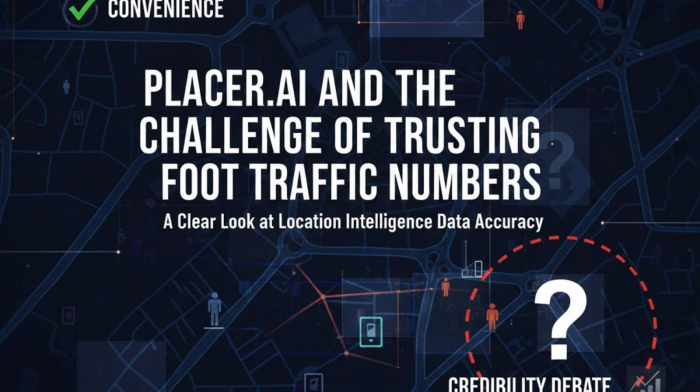Artificial intelligence has firmly cemented its place in enterprise conversations, but the real challenge lies in separating perception from performance. For many leaders, AI is framed as a silver bullet, but its ability to truly change the way companies operate depends on execution. Businesses that adopt AI without a plan risk ending up with fragmented tools rather than integrated systems that reshape workflows. This is where strategic approaches—such as aligning AI with customer value, scaling responsibly, and embedding it into daily operations—determine winners and laggards. Forward-looking companies know that success is less about adopting tools and more about building sustainable, AI-driven business ecosystems.
Within the software development space, AI has moved from experimental proof-of-concepts to full integration into agile workflows, CI/CD pipelines, and automated decision-making frameworks. Reports such as https://thelettertwo.com/2024/11/01/ai-economy-how-companies-unlock-ai-value-beyond-hype/ highlight how leading enterprises are starting to overcome the hype trap by prioritizing measurable ROI. At the same time, building enterprise-ready AI assistants and orchestration engines is no longer speculative—it’s already being achieved in practice with solutions like AI virtual assistant deployments that are designed for scalability and resilience.

Why Enterprises Struggle to Extract Value from AI
Despite massive investments, many organizations struggle to move from AI excitement to business impact. The gap often stems not from the technology itself but from organizational and strategic shortcomings. Enterprises tend to adopt AI reactively, piloting small initiatives without a clear value proposition, which results in scattered experiments that never scale.
One of the biggest challenges is the “innovation-expectation gap.” Business leaders expect AI to deliver instant cost savings or revenue growth, while development teams recognize the need for data readiness, infrastructure, and iterative refinement. This disconnect creates frustration and sometimes undermines future investment. Another hurdle is cultural resistance—employees often fear AI as a job replacement tool rather than a productivity amplifier. Without intentional change management, adoption falters.
Legacy systems compound the problem. Data silos, inconsistent governance, and outdated architectures make it difficult for AI models to perform effectively. Instead of unlocking insights, companies spend months untangling integration issues. To truly extract value, enterprises must recognize that AI adoption is not a sprint toward a quick win—it’s a marathon that demands aligning people, processes, and platforms with measurable outcomes.
Building the Right Foundation for AI Success
No AI strategy succeeds without a strong foundation, and for enterprises, this foundation rests on two pillars: high-quality data and scalable architectures. The biggest misstep companies make is underestimating the role of clean, well-governed, and accessible data. Poor data quality leads to biased models, unreliable predictions, and diminished trust among users. Enterprises that succeed treat data not as a byproduct of operations, but as a strategic asset that requires ongoing stewardship.
Equally critical is the architecture underpinning AI systems. Cloud-native, modular infrastructures allow organizations to deploy and update models seamlessly while accommodating the computational needs of large-scale AI. Scalable APIs, containerization, and MLOps pipelines ensure AI doesn’t remain locked in a lab but becomes part of the enterprise’s core technology fabric.
A seldom-discussed but equally important factor is organizational literacy. AI adoption thrives when employees understand how it works, its limitations, and its role in workflows. Enterprises that invest in training—not just for developers, but also for business leaders and non-technical staff—lay the groundwork for sustainable adoption. In this sense, the foundation isn’t only technological but also cultural.
From Pilots to Production: Operationalizing AI at Scale
One of the most common pitfalls in enterprise AI initiatives is the “pilot trap.” Organizations run dozens of experiments, yet only a fraction ever reach production. This happens because pilots are often isolated from broader workflows, with unclear ownership and no plan for long-term integration.
Operationalizing AI requires more than technical deployment. It means aligning governance, security, and compliance from the start. For instance, models should be monitored for drift and performance degradation, while pipelines should account for retraining schedules. This is not just about building a model that works today—it’s about ensuring it evolves alongside the business environment.
What’s rarely emphasized is the role of business workflow embedding. AI delivers measurable impact when it’s woven directly into processes such as supply chain optimization, customer service resolution, or predictive maintenance scheduling. Enterprises that build “AI-enabled workflows” see adoption rates soar because the technology becomes invisible—it works within the flow of work rather than forcing people to adapt around it.
Designing AI for Measurable Business Impact
To make AI valuable, organizations must move away from vanity metrics—such as the number of models built—and focus on outcomes that matter. This requires defining KPIs at the outset of any initiative. For example, in software development, AI adoption can be measured through reduced defect rates, accelerated time-to-market, or improved developer productivity.
Equally important is human-centric adoption. AI systems that ignore user experience risk rejection, no matter how technically sophisticated. Successful enterprises design AI tools that augment human decision-making rather than replace it. For instance, predictive analytics should provide context and explainability so teams understand why a recommendation was made.
This shift toward outcome-driven AI also forces a deeper conversation about accountability. Who owns AI success—the developers building it, the executives funding it, or the employees using it? The answer is all three. Shared accountability ensures that measurable impact is not an afterthought but an ongoing priority throughout the lifecycle.
Case Study Insights: Where AI Is Already Delivering Real Value
AI’s tangible impact is becoming clearer across industries, and software development companies can learn from these examples:
| Business Domain | AI Application Example | Business Value Created |
| Customer Experience | Virtual assistants for omnichannel support | Reduced resolution time, higher NPS |
| Operations | Predictive supply chain analytics | Lower costs, fewer disruptions |
| Risk Management | Fraud detection with adaptive ML models | Minimized financial losses, higher trust |
| Product Innovation | AI-generated design and prototyping | Accelerated R&D cycles, faster launches |
| Workforce Enablement | Intelligent code completion in IDEs | Higher developer productivity, fewer bugs |
What sets these successes apart is not the novelty of the use case, but the discipline of execution. Each example reflects a clear link between AI output and enterprise outcomes, backed by robust infrastructure and governance.
The Role of Software Development in Enterprise AI Transformation
Software development teams are at the heart of AI transformation. Unlike off-the-shelf solutions, custom-built AI systems can be tailored to an organization’s unique workflows, regulatory requirements, and cultural contexts. This customization is key for achieving adoption at scale.
Modern software development practices also adapt AI for continuous integration. Unlike traditional apps, AI models require ongoing monitoring, retraining, and fine-tuning. Development pipelines must evolve to incorporate MLOps practices, ensuring that AI stays aligned with business needs over time.
A less obvious but critical role for software development is ensuring interoperability. AI systems rarely live in isolation—they interact with ERP systems, customer platforms, and analytics dashboards. Developers are responsible for ensuring that these integrations don’t just function, but do so in a way that is secure, scalable, and user-friendly.
Risk, Ethics, and Responsible AI at Scale
Enterprises cannot scale AI responsibly without addressing risks around fairness, bias, and accountability. Models trained on unbalanced datasets can inadvertently reinforce discrimination, while opaque algorithms erode user trust. For this reason, AI governance must be built into the development lifecycle rather than bolted on afterward.
Responsible AI also demands transparency. Explainable AI (XAI) frameworks give stakeholders visibility into how predictions are made, building trust among both employees and customers. Regulatory alignment—such as with the EU’s AI Act—ensures that enterprises remain compliant as AI oversight becomes stricter worldwide.
Another often-overlooked factor is sustainability. AI requires significant computational resources, and enterprises must weigh performance gains against energy consumption. Companies that prioritize green AI practices—such as optimizing models for efficiency—will gain not just compliance advantages, but reputational benefits in a sustainability-driven market (OECD resource on trustworthy AI).
Building the Future Enterprise: AI as a Strategic Partner
The true transformation happens when AI evolves from being a toolset to becoming a strategic partner in enterprise growth. This requires reframing AI from “something IT owns” to “something that drives core strategy.” Companies that treat AI as an afterthought will remain stuck in cycles of experimentation, while those that integrate it into vision and culture will build long-term resilience.
AI’s role as a partner is most evident in how it enables adaptability. Markets are shifting rapidly, and AI allows organizations to respond in near real-time—whether that’s rerouting logistics networks, adjusting pricing strategies, or predicting customer churn. For software development firms, AI becomes not just a feature within applications but a driver of entire business models.
By embedding AI into the DNA of the enterprise, organizations can achieve more than efficiency. They gain foresight, resilience, and the ability to shape markets rather than merely react to them. In this way, AI is no longer hype—it is the foundation of sustainable business value.
Post Comment
Be the first to post comment!





